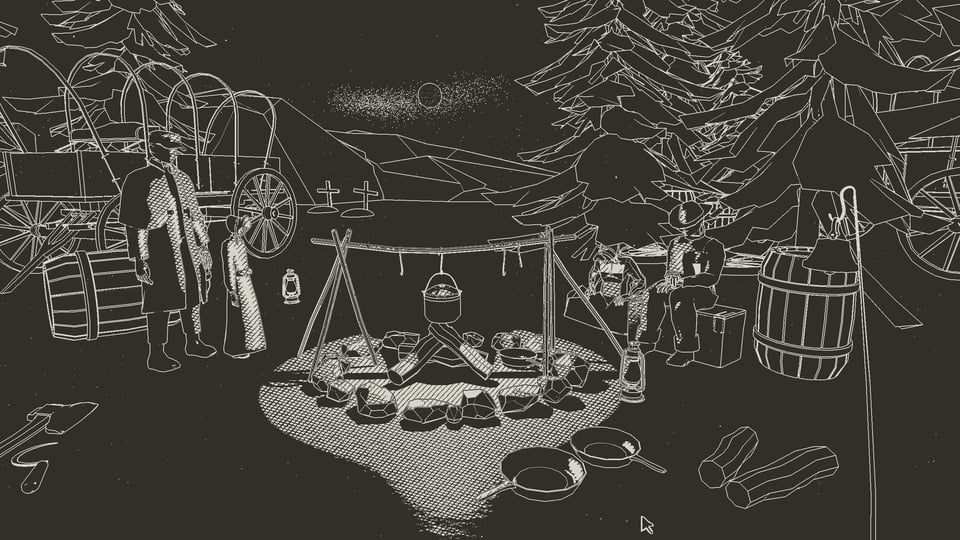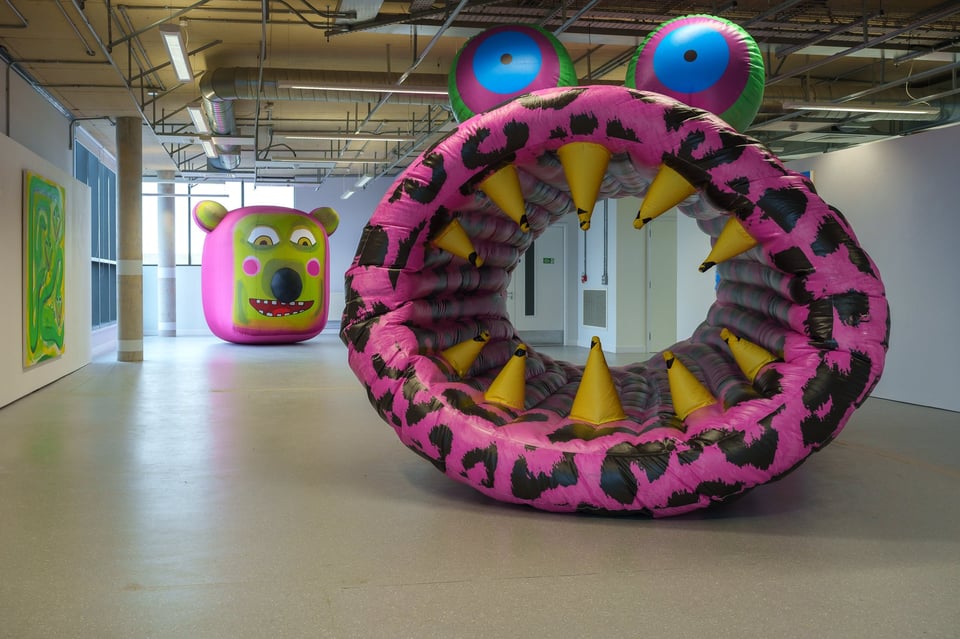Expedition 10
The Bathysphere
Welcome to the tenth expedition of the Bathysphere! This week we have safe-cracking, Solarcans and sassy French games. Chris’ essay is on an interesting trip to Newhaven. And as for the retro section … It’s thinking!
As ever, part of the newsletter is free, part is only available to paid subscribers. Please consider signing up for an annual subscription which will allow us to stay aboard the Bathysphere for longer. Thank you – and enjoy the journey!
The Bathysphere crew
Christian Donlan
Florence Smith Nicholls
Keith Stuart
Contact us at bathyspherecrew@gmail.com
Delightful games

I am going to admit that I only discovered Wagon due to Mount Your Friends developer Daniel Steger posting his List of Underrepresented Steam Games on Bluesky. It’s sort of a narrative deck-builder that combines The Oregon Trail with the visuals of Return of the Obra Dinn. If you enjoyed Inscryption but felt that what it lacked was dysentery, you’re on the right ride. KS
Just a quick one from me this week and a reminder that there are safe-cracking games on the Apple Watch that allow you to use the crown as the safe’s main dial. Here’s one. I don’t have an Apple Watch, but I still think this is a perfect piece of controller implementation. CD
Interesting things
My growing interest in weird photography has reached photograms, or images made without a camera. I’ve spent a few weeks messing around with cyanotypes, which involves sheets of blue paper that develop images just by being in sunlight, and last week I installed a Solarcan on the south-facing wall of our house. I’m not sure if a Solarcan counts as a photogram or not, because the can itself becomes a pinhole camera. Mine lasted a few days before the wind removed it, but I’ve kept it going - still recording - and it’s now on a more protected bit of wall. I’m sure the eventual image will be largely unreadable.
This sudden middle-aged urge for printmaking feels like it’s occupying the same part of my brain that likes videogames. I’ve always enjoyed puzzle games where you’re left with an image you sort of made by playing at the end of a round, and there’s that same sense of accidental creativity to something like a Solarcan. The mistakes become part of the image. If this one is any good - or if it’s memorably bad - I’ll share it on here in six months when it’s done. CD
If you want to get bang up to date with the French game development scene, I recommend watching this video from ActuGaming – it’s a recording of AG French Direct 2025, a recent digital event celebrating French and French language games. There are 45 trailers and it’s a joyfully eclectic bunch. One game – Kosmocean: The Endless Sea – even features a bathyscaphe, which is close enough to a bathysphere to be our favourite of the event. KS
This week I went to the “A World of Games” exhibition at the Världskulturmuseet in Gothenburg. It explores how games and play have developed in different contexts across the world over 4000 years, from analogue to digital. I really appreciated how they included playable examples of indigenous games, such as the Moccasin Game that has a long history in North America, and involves hiding an object in a slipper. The exhibition is running until May 2026 so you still have plenty of time to catch it. FSN
Trans Technologies is a new open access book by Oliver L. Haimson. It discusses how trans people use and can be empowered by technology, but also how trans perspectives can influence and broaden technological possibilities in turn. Games come up a fair bit; there’s a section on the “Trans Fucking Rage Jam” hosted on itch.io, for example. Sometimes it’s good to get angry and make things. FSN
Essay: Soft play with Asbestos

Question: Why do you do inflatables instead of just art on canvases?
Answer: I really like it when people can play with the artwork. And that it’s perhaps not finished by the artist, that it’s finished by the people that come to visit.